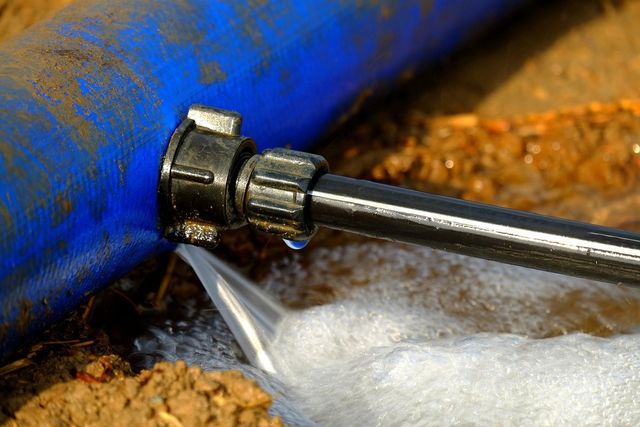Locating Concealed Water Line Leaks: Six Clever Hacks
Locating Concealed Water Line Leaks: Six Clever Hacks
Blog Article
Listed here below you will find a good deal of reliable information all about Detecting hidden plumbing leaks.

Early discovery of leaking water lines can minimize a potential catastrophe. Some little water leaks might not be visible.
1. Take A Look At the Water Meter
Inspecting it is a surefire way that helps you discover leaks. If it moves, that indicates a fast-moving leakage. This means you might have a slow-moving leakage that can also be below ground.
2. Examine Water Intake
If you detect unexpected modifications, in spite of your consumption being the very same, it implies that you have leaks in your plumbing system. An abrupt spike in your expense shows a fast-moving leakage.
A consistent increase every month, also with the same behaviors, shows you have a slow-moving leak that's also slowly rising. Call a plumber to completely check your residential or commercial property, specifically if you feel a cozy location on your floor with piping below.
3. Do a Food Coloring Examination
When it comes to water consumption, 30% comes from commodes. If the color in some way infiltrates your dish during that time without flushing, there's a leakage between the storage tank as well as dish.
4. Asses Exterior Lines
Do not neglect to inspect your exterior water lines too. Test faucets by attaching a garden hose pipe. Needs to water seep out of the link, you have a loosened rubber gasket. Replace this as well as guarantee all connections are limited. It will help get it expertly took a look at and also kept each year if you've got a lawn sprinkler system. One small leakage can throw away lots of water and surge your water expense.
5. Examine as well as Examine the Scenario
Home owners need to make it a practice to examine under the sink counters and even inside closets for any bad odor or mold growth. These 2 red flags indicate a leak so prompt attention is required. Doing regular assessments, even bi-annually, can save you from a major issue.
If you understand your house is already old, maintain a careful eye on your heaters, hoses, pipelines and so on. Look for stainings and damaging as most devices and pipelines have a life span. They will certainly likewise naturally wear away as a result of deterioration. If you think dripping water lines in your plumbing system, don't wait for it to rise. Call a specialist plumber right away so you do not end up with a horrible mess in your house.
Early discovery of leaking water lines can mitigate a prospective disaster. Some small water leakages may not be noticeable. Examining it is a guaranteed way that assists you discover leaks. One tiny leak can throw away lots of water and increase your water bill.
If you presume dripping water lines in your plumbing system, don't wait for it to intensify.
WARNING SIGNS OF WATER LEAKAGE BEHIND THE WALL
PERSISTENT MUSTY ODORS
As water slowly drips from a leaky pipe inside the wall, flooring and sheetrock stay damp and develop an odor similar to wet cardboard. It generates a musty smell that can help you find hidden leaks.
MOLD IN UNUSUAL AREAS
Mold usually grows in wet areas like kitchens, baths and laundry rooms. If you spot the stuff on walls or baseboards in other rooms of the house, it’s a good indicator of undetected water leaks.
STAINS THAT GROW
When mold thrives around a leaky pipe, it sometimes takes hold on the inside surface of the affected wall. A growing stain on otherwise clean sheetrock is often your sign of a hidden plumbing problem.
PEELING OR BUBBLING WALLPAPER / PAINT
This clue is easy to miss in rooms that don’t get much use. When you see wallpaper separating along seams or paint bubbling or flaking off the wall, blame sheetrock that stays wet because of an undetected leak.
BUCKLED CEILINGS AND STAINED FLOORS
If ceilings or floors in bathrooms, kitchens or laundry areas develop structural problems, don’t rule out constant damp inside the walls. Wet sheetrock can affect adjacent framing, flooring and ceilings.
https://www.servicemasterbyzaba.com/blog/how-to-detect-water-leakage-in-walls/

As an avid person who reads about Top leak detection hacks, I imagined sharing that blog post was a good thing. You should take the time to distribute this blog post if you liked it. We enjoy reading our article about Leaking water lines.
Information Report this page